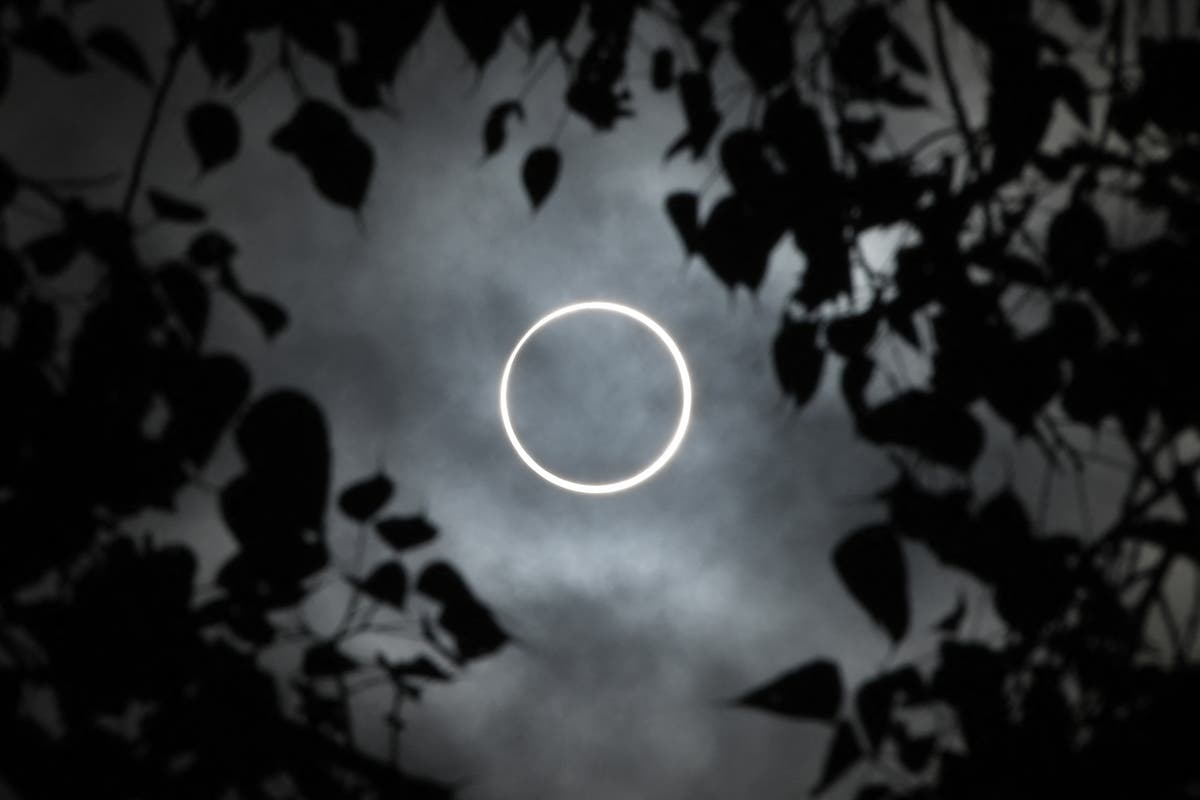A total eclipse of the Sun plunged a stretch of North America into darkness on Monday, with millions of spectators across the US, Mexico and Canada hoping to catch a glimpse of the rare event.
It was North America’s biggest eclipse crowd ever, with the path of totality crossing directly over 44 million people.
More were drawn in from across the world thanks to the lure of clear skies and up to four and a half minutes of midday darkness in some places.
Almost everyone in North America was guaranteed at least a partial eclipse, weather permitting.
The best weather was seen in Mexico and at the tail end of the eclipse in Vermont and Maine, as well as New Brunswick and Newfoundland.
“Cloud cover is one of the trickier things to forecast,” National Weather Service meteorologist Alexa Maines explained at Cleveland’s Great Lakes Science Centre on Sunday. “At the very least, it won’t snow.”
Scientists observe animal behaviour changes during eclipse
Zookeepers and scientists documented unusual behaviour among animals including, gorillas, giraffes, macaws and flamingoes during the total solar eclipse.
Since total solar eclipses are rare, researchers observed animals on Sunday evening at zoos including the San Antonio Zoo and the Fort Worth Zoo in the US.
The San Antonio Zoo shared a video of meerkats running erratically throughout their habitat “as one large group” during totality.
“Meerkats approaching and entering their indoor habitat space in the few minutes prior to totality, which supported our working hypothesis that diurnal animals, meaning those awake during the day, would display their typical evening activity patterns during totality!” the zoo’s official X account posted.
As the skies darkened, many animals in the Forth Worth zoo reportedly made their way through their barn doors, which the creatures usually do at night.
Birds also showed behaviour changes in some zoos.
An Indianapolis Zoo spokesperson told CBS News that macaws, budgies and other birds got quiet and roosted up high, displaying nighttime behaviour during the eclipse.
Vishwam Sankaran9 April 2024 04:05
What are the next celestial events to look forward to?
The eclipse is over, but the millions who watched it in North America don’t have that long to wait for the next celestial event.
Later this month will see the Lyrids Meteor Shower, before the Eta Aquarids light up the sky in May. In July, the Perseid meteor shower will rain shooting stars, while star gazers can also look forward to a partial lunar eclipse in September and an annular solar eclipse in October.
You can find out more about the next night-sky events here:
Graeme Massie9 April 2024 02:57
Here’s what the solar eclipse looked like in the path of totality
‘What was the experience like watching it? Eudaimonia,’ one person who’d travelled eight hours to see the total solar eclipse in Vermont told Amber Jamieson.
Graeme Massie9 April 2024 01:45
Weather Channel goes wild for solar eclipse
A clip from the Weather Channel has been doing the rounds after the presenter got very excited by the totality.
Stephanie Abrams was in Fredericksburg, Texas, when the total solar eclipse appeared from behind the clouds.
She can be heard screaming through the darkness: “We got it! Oh my god, it’s just so amazing.”
Anthony Cuthbertson9 April 2024 00:30
Black spot appears over Earth
It’s not only the International Space Station offering views of today’s solar eclipse – a satellite from SpaceX’s Starlink network caught the moment a black spot appeared over Earth.
Anthony Cuthbertson8 April 2024 22:29
Niagara Falls plunges into darkness
Local outlet WIVB-TV has shared footage of the moment Niagara Falls fell into darkness in the middle of the day.
The solar eclipse, whose path of totality passed right over the border town, caused street lights to automatically switch on.
Anthony Cuthbertson8 April 2024 22:19
‘I was about to cry’ says top astrophysicist in Montreal
“We were in connection directly with the universe, with the sun, with the moon, and we are so humble to see that.”
Minutes after the moon blotted out the sun for 90 surreal seconds on an island in the St Lawrence River, Olivier Hernandez, director of the Montreal Planetarium and a noted astrophysicist, was almost in tears.
“It was so emotional I was about to cry. Did you see the corona? Did you see the purity of the light coming out from the sun? We have seen also the chromosphere,” he said
“Wow, what a show, what a show.”
In the Great American Eclipse of 2024, Montreal was the star turn that no one had predicted. Most astronomical attention along the “zone of totality” was focused on Texas and the Midwest, with Niagara Falls also hoping for clear skies over one of the world’s great tourism icons.
In the end, though, the corrugated skyline of Canada’s biggest French-speaking city was the backdrop to a cosmic show that was summed up again and again as extraordinaire.
Simon Calder8 April 2024 22:03
Total solar eclipse in pictures
We’ve got a round up of the best pictures from across North America of today’s solar eclipse.
Anthony Cuthbertson8 April 2024 21:41
The view from a Rhode Island daycare
Children at a daycare in Providence, Rhode Island, have been enjoying the eclipse through some colourful headwear.
Céleste, 5, watched her first ever solar eclipse through a mask she decorated herself.
Her verdict of the celestial spectacle? “Cool.”
Anthony Cuthbertson8 April 2024 21:10

Emily Foster is a globe-trotting journalist based in the UK. Her articles offer readers a global perspective on international events, exploring complex geopolitical issues and providing a nuanced view of the world’s most pressing challenges.








